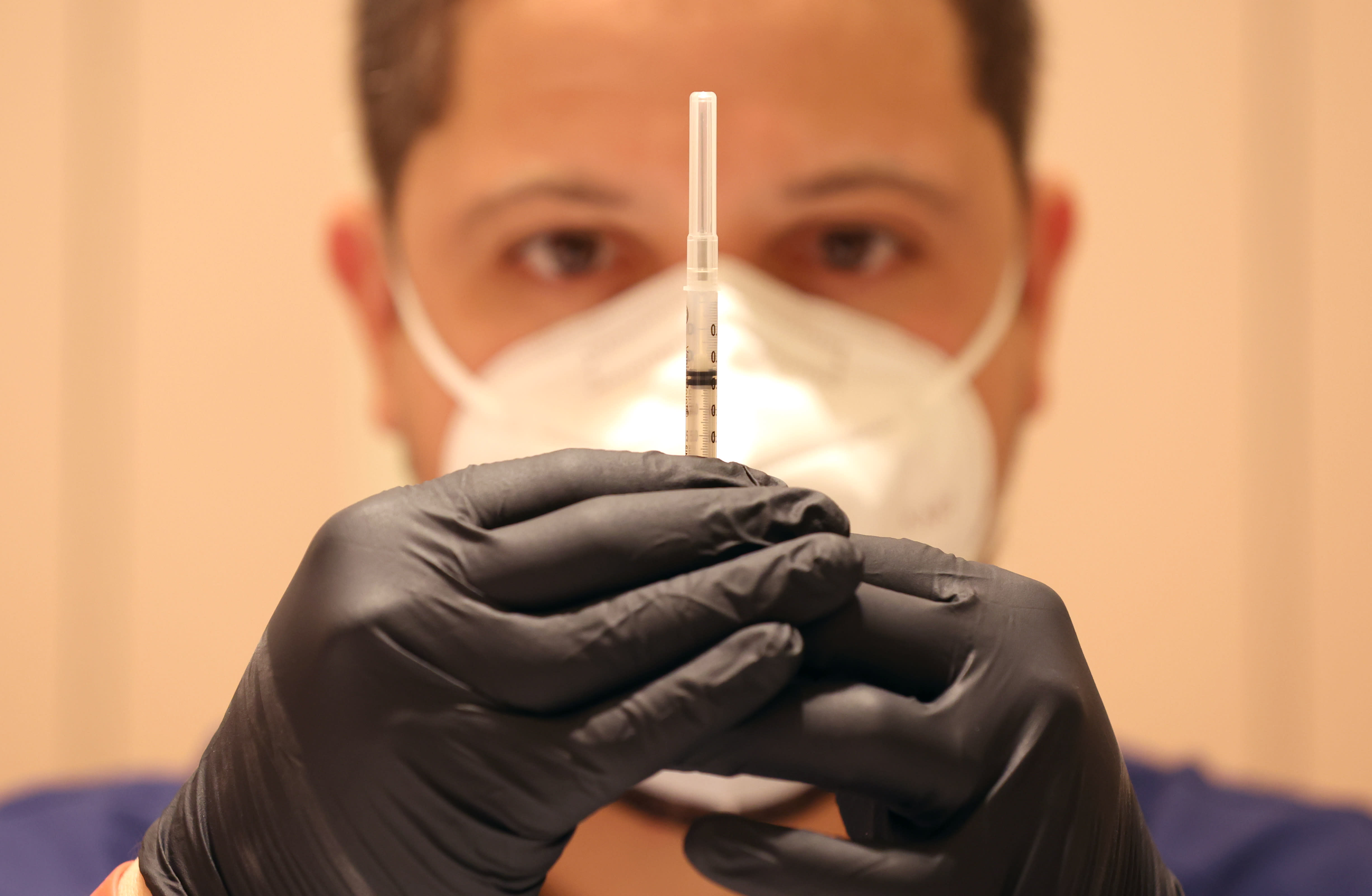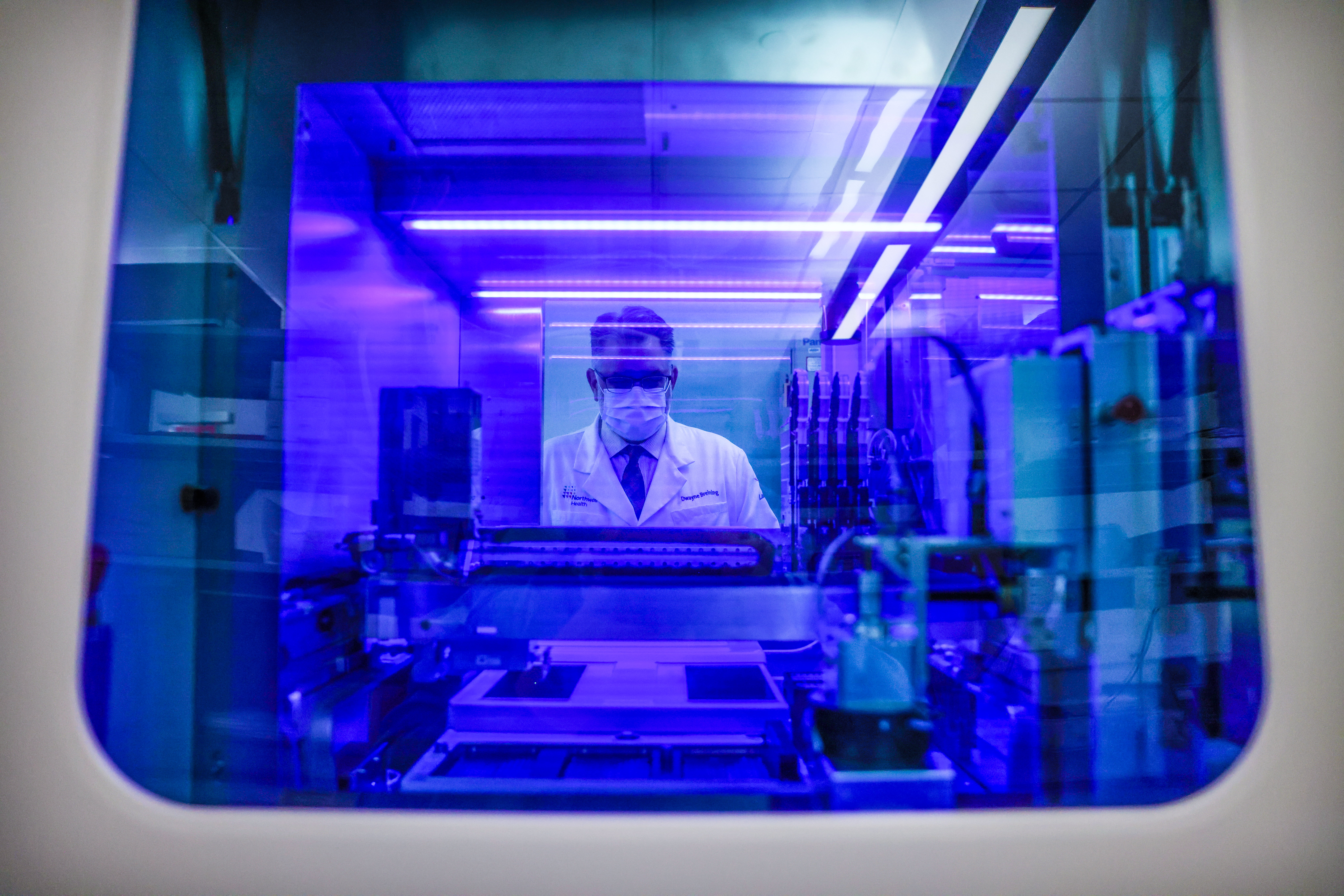New York City is reevaluating its COVID alert system amid yet another pandemic wave that, unlike the others, has not seen soaring positivity rates coupled with significant increases in hospitalizations, the health commissioner says.
NYC Department of Mental Health and Hygiene Commissioner Dr. Ashwin Vasan referenced the shift on Thursday afternoon. A vague message that now appears on the health department website confirms the system, which only debuted when Mayor Eric Adams took office earlier this year, is being reviewed.
City officials said to check back in the coming weeks for updates.
"We remain committed to transparency and will continue to share COVID-19 data on our website," the message said.
Get Tri-state area news and weather forecasts to your inbox. Sign up for NBC New York newsletters.
The city's COVID alert system relies on the same critical indicators -- rolling new case and hospital admissions rates as well as the share of staffed COVID inpatient beds -- to inform its decision-making. The alert levels are strictly intended to inform guidance around masking and other COVID protocol. Mandates don't auto-apply.
The abrupt shift may raise eyebrows. It comes as citywide positivity rates are once again creeping up to late-January levels, and as top doctors warn a sixth pandemic wave driven by the "worst version" of the omicron variant yet may be imminent.
New York City officials only just downgraded the COVID alert level to medium on June 21 after a month or so at high. All five boroughs merited a high risk designation from the CDC as well, under that agency's system, for the better half of May but the situation had vastly improved through June -- until now.
While lower testing rates may skew positivity numbers, citywide transmission levels were up about 19% between June 20 and June 27, indicating increasing viral spread. That percentage change is significantly up from earlier this week.
In some parts of Manhattan, positivity rates are nearly 17% now, while they top 20% in eastern parts of Queens. And New York City has the highest rolling new case rate (37.0 per 100,000) of all 10 regions in the state, with only Long Island coming in as a close second at a rate of 34.0 new cases per 100,000 residents on a rolling basis.
There is no corresponding surge in COVID hospitalizations this time around, city data shows. The seven-day average for new admissions is 81, according to health department data, and has declined daily over the last week while cases rose.
Dr. Jay Varma, a Weill Cornell epidemiologist and formerly Mayor Bill de Blasio's top public health advisor during the pandemic, noted earlier this week that infections appear to have stabilized at a high level in the city, rather than dropping.
"The decline of reported #COVID19 cases in NYC has stopped. Reported cases are at a high plateau, which means actual transmission is very high when you account for the >20x under-counting. This is likely the beginning of a BA.5 wave," Varma tweeted.
The BA.5 subvariant of the omicron variant of COVID-19 accounts for about a third of New York City cases being tested for variants, according to the latest data, though experts agree the actual share is likely much higher than reported.
The omicron subvariant is raising concerns around the world because it escapes immunity more easily and transmits more readily as well. Researcher Eric Topol, in a widely quoted post this week, called BA.5 the "worst version" of omicron yet seen.
The latest increases are hardly relegated to just New York City. The number of U.S. counties at high risk for community COVID spread soared in the CDC's weekly update, with Friday's map showing 60% more counties at high risk in just a week.
Almost 20% of U.S. counties -- 627, total -- are now in the CDC's high-risk area. Last week, about 12% -- 392, total -- were considered to be high risk for COVID spread. New York state added another county to the high-risk pool -- Suffolk County.
Suffolk and Nassau counties on Long Island are the only high-risk counties in New York state, according to the CDC, at this time. Four of New Jersey's 21 counties are at high risk, reflecting no change from last week. All but three of Connecticut's eight counties are low risk, while the rest are medium.




